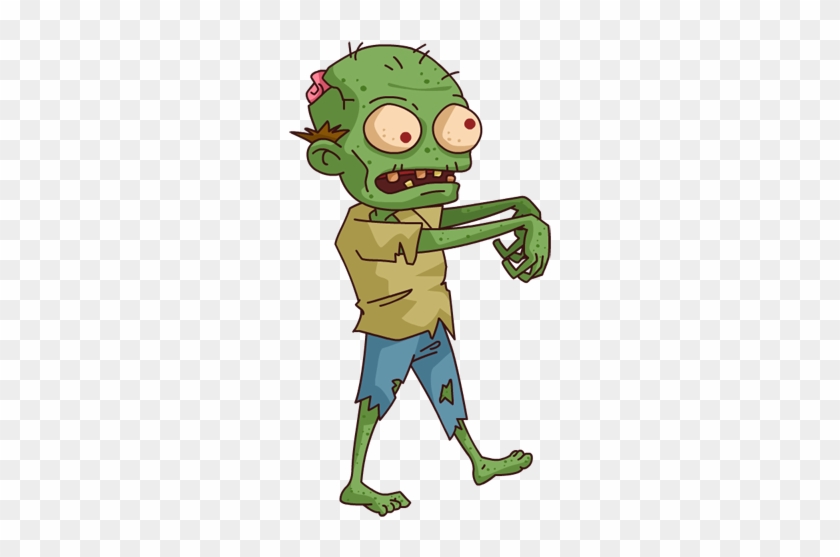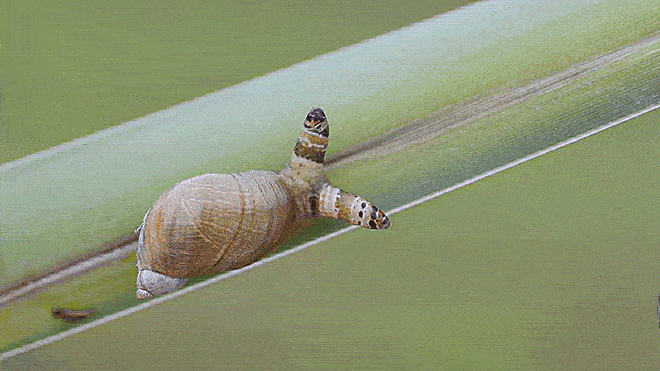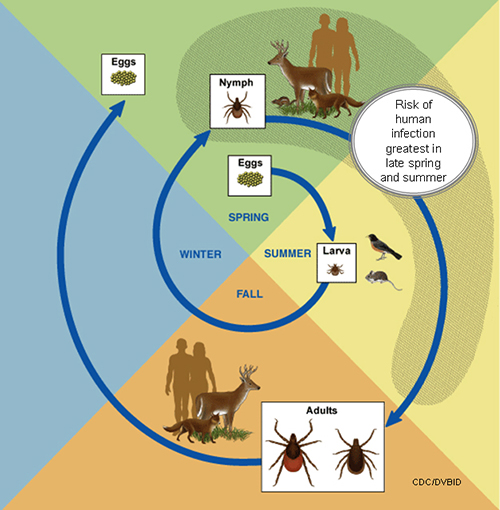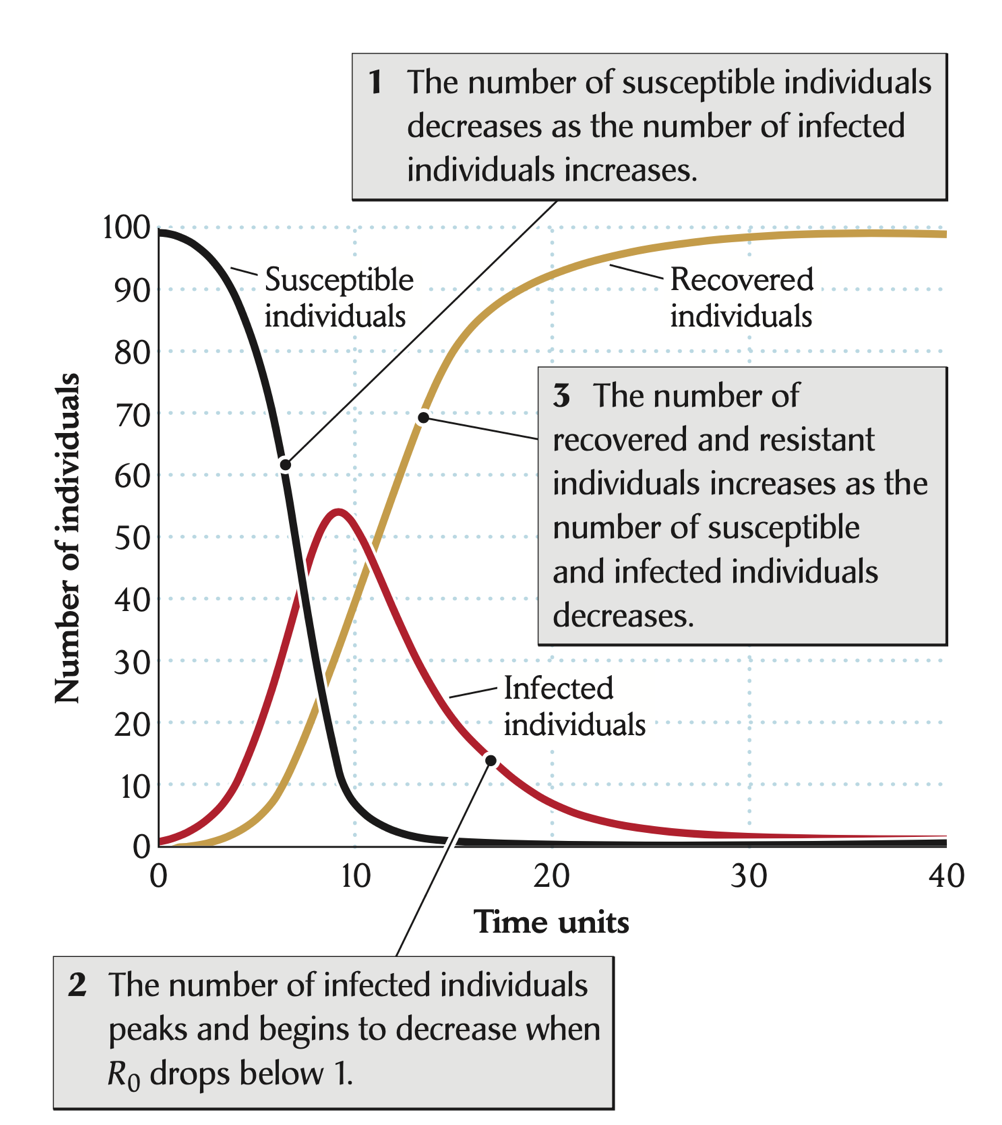class: center, middle, inverse, title-slide # Week 8: host-parasite interactions ### Tad Dallas ### LSU --- class: left, middle class: left, center, inverse .font300[Announcements] + + + --- background-image: url('figs/covid.png') background-position: 50% 50% background-size: contain class: center, middle, inverse # .font200[Pandemic] --- # Parasite-Host Interactions .font200[ 1. Effects of parasites 2. Types of parasites 3. Modeling parsite-host interactions 4. Parasite-host coevolution 5. Disease spread ] --- class: center, middle .pull-left[  ### Zombie Movies ] -- .pull-right[  ### [Zombie in nature: article](https://www.wired.com/2014/09/absurd-creature-of-the-week-disco-worm/) ] --- class: middle, center <iframe width="1200" height="498" src="https://www.youtube.com/embed/Go_LIz7kTok" frameborder="0" allow="accelerometer; autoplay; clipboard-write; encrypted-media; gyroscope; picture-in-picture" allowfullscreen></iframe> --- # Parasite, pathogen, infection, and disease .font200[.red[parasite]: an organism that lives in or on another organism (.green[host]) and causes .blue[harmful] effects as it consumes resources from the host.] .font150[(consumer-resource)] -- .font200[When parasites colonize a host, that host is said to harbor an .red[infection]] -- .font200[Only if that infection gives rise to symptoms that are clearly harmful to the host should the host be said to have a .red[disease], e.g., COVID-19] -- .font200[.red[Pathogen]: any parasite that causes a disease (i.e. is ‘pathogenic’), e.g., SARS-CoV-2] ??? though infection by a pathogen does not always result in an infectious disease; asymptomatic --- # Parasites are diverse ### Pretty much every organism of living thing has one or more parasite, including parasites (_hyperparasite_) -- ### Many parasites are host-specified or at least have a limited range of hosts (_specialists_); few has a broad range of hosts (_generalists_) -- ### The conclusion seems _unavoidable_ that .red[more than 50%] of the species on the earth, and many more than 50% of individuals, are parasites --- # Effects of parasites ### Large toll on people: >25% human deaths are caused by infectious disease; 100 million people died in 1918 (the Great Influenza Pandemic caused by H1N1 virus); >2 million deaths caused by COVID-19 so far ### On wildlife: bird flu; chytrid fugus caused extinctions of amphibian species; white-nose syndrome for bats ### On plants: crops (e.g., wheat rust), trees (e.g., chestnut blight, dutch elm disease) ??? american chestnut trees used to be >50% of trees in temperate forests; now they are rare since the introduce of chestnut blight around 1900 from Asian --- # Types of parasites .font130[ - By location + .blue[ectoparasites]: live on the outside of organisms (e.g., ticks, mites, lice, fleas, mistletoes) + .blue[endoparasites]: live inside organisms (e.g., virus, cestode), often cause diseases ] -- .font130[ - By size + .blue[microparasites]: small and often intra-cellular, reproduce directly within host and are often extremely numerous (e.g., virus, some types of bacteria and protists) + .blue[macroparasites]: larger, live on or within a host (in cavities such as the gut or inter-cellular), do not reproduce in their host (e.g., helminth worms in an intestine, some types of fungi, bacteria and protozoa) ] -- .font130[ - By transmission mode + .blue[horizontal]: move between individuals other than parents and offsprings + .blue[vertical]: transmitted from a parent to its offspring ] ??? tradeoffs: exposure to natural enemies, external envi, difficulty to move among host, ease of feeding on hosts --- class: center # Parasite life cycle complexity  --- # The parasite niche ### Multidimensional space of tolerances and requirements of a species (abiotic and biotic) ### Niche --> understand and predict geographic distribution ### Niche --> understand host range and predict host switching; _spillover_ if the host switching involves the ability to infect a human host .font130[ - the Great Influenza Pandemic in 1918 (H1N1 virus from birds) - HIV (virus from chimpanzees) - SARS in 2003 (SARS-CoV from bats?) - COVID-19 (SARS-CoV-2 from ?) ] --- # Hosts as habitats .font130[Hosts as reactive environments: resistance, recovery, and immunity] <img src="figs/chimp.jpeg" width="60%" style="display: block; margin: auto;" /> ??? Chimpanzees infected with nematodes seek out and eat a bitter plant that contains chemicals that kill or paralyze the nematodes --- # The consequences of host reaction: S-I-R ## .red[S] : susceptible individuals ## .red[I] : infectious individuals ## .red[R] : recovered (and immune) individuals ### .blue[Costs of parasitism don’t have to involve death.] --- # S-I-R model .pull-left[ .font150[ `\begin{align} \frac{dS}{dt} & = -\beta SI \\ \frac{dI}{dt} & = \beta SI - dI \\ \frac{dR}{dt} & = dI \end{align}` ] ] -- .pull-right[] --- # S-I-R model .pull-left[ .font150[ `\begin{align} \frac{dS}{dt} & = -\beta SI \\ \frac{dI}{dt} & = \beta SI - dI \\ \frac{dR}{dt} & = dI \end{align}` ] ] .pull-right[ ## Model assumptions .font150[ - A well-mixed population - Same susceptibility for every individual - No births of new susceptible individuals - Permenant immunity after recovering ] ] --- # `\(R_0\)` .pull-left[ .font150[ `\begin{align} \frac{dS}{dt} & = -\beta SI \\ \frac{dI}{dt} & = \beta SI - dI \\ \frac{dR}{dt} & = dI \end{align}` ] ] .pull-right[ .font150[ `\(\frac{dI}{dt}>0\)` only if `\(\beta SI > dI\)` `\(R_0 = \frac{\beta SI}{dI} = \frac{\beta S}{d}\)` `\(\frac{1}{d}\)`: the average duration of infection ] ] -- ### `\(R_0\)`: .green[the number of secondary infections generated by a single infected individual in a wholly susceptible population] ### It provides a powerful framework for exploring the dynamics and control of epidemics --- # `\(R_0\)` of COVID-19 by 23 May, 2020 <img src="figs/r0_usa.jpeg" width="95%" style="display: block; margin: auto;" /> Ives and Buzzuto, 2021 https://www.nature.com/articles/s42003-020-01609-6 --- # How do we reduce `\(R_0\)`? .font200[$$R_0 = \frac{\beta S}{d}$$] .pull-left[ .font150[ - `\(d\)` ? - `\(\beta\)` ? - `\(S\)` ? ] ] -- .pull-right[ .font150[Vaccination: what fraction of population to achive _herd immunity_?] `\(R_0 = \frac{\beta S (1 - c)}{d} < 1\)` `\(c > 1 - \frac{d}{\beta S} = 1 - \frac{1}{R_0}\)` ] -- ### If `\(R_0\)` of COVID-19 is 4, that means we need to vaccinate 75% of population to control the pandemic --- # Evolution of host-parasite systems ### Natural selection has favored the evolution of .red[parasite offenses] and .blue[host defenses] ### Parasite should optimize the trade-off between virulence and transmissibility ### Hosts also evolve, but typically slower than parasites, producing arms races between hosts and parasites ### The .red[Red Queen Hypothesis] predicts a continuing evolutionary battle between parasites and hosts, not a stable equilibrium --- # Evolution of host-parasite systems: rabbits and myxoma virus <img src="figs/rabbits.jpg" width="60%" style="display: block; margin: auto;" /> > .font130[The wild rabbits started to resist the virus, the virus started to kill them in a new way, and neither side gained any ground. “It’s like a duck in a stream, paddling like crazy under the water and not getting anywhere,” says Read.] [The Next Chapter in a Viral Arms Race](https://www.theatlantic.com/science/archive/2017/08/rabbit-virus-arms-race/536796/) [Next step in the ongoing arms race between myxoma virus and wild rabbits in Australia is a novel disease phenotype](https://www.pnas.org/content/114/35/9397) [Seventy years ago, humans unleashed a killer virus on rabbits. Here's how they beat it](https://www.sciencemag.org/news/2019/02/seventy-years-ago-humans-unleashed-killer-virus-rabbits-heres-how-they-beat-it) ??? In 1859 European rabbits were introduced to Australia, exponential growth of rabbits In 1950, the government released a virus known as _Myxoma_ to control rabbits. It kills an infected rabbit in 48 hours, with 99.8% killing rates. Second breakout: 90%; third breakout: 40-60%; ... 6th breakout: 20% rabbit populations rebound, virus persist --- # Disease spread ## Environmental controls disease spread .font200[ - Environment influences tranmission process - Environment affect the growth of pathogen within a host and the host - Environment affect host or vector behavior + Host behavior: social contact networks ] --- # Global environmental change and disease spread .font200[ - Land use change - Climate change - Species invasion - Community composition and biodiversity ] --- background-image: url('figs/covid.png') background-position: 50% 50% background-size: contain class: left, middle, inverse ## .red[How does this lecture help you in] ## .red[understanding the current pandemic?]